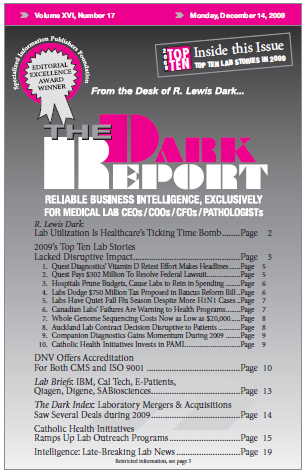CEO SUMMARY: Catholic Health Initiatives (CHI) wants to expand its presence in outpatient and outreach services. It sees hospital laboratory outreach programs as a key component of this strategy. It will use an equity investment in Pathology Associates Medical Laboratories (PAML) as the foundation of a series of laboratory outreach joint ventures between its 78 …
Catholic Health Initiatives Ramps Up Lab Outreach Read More »
To access this post, you must purchase The Dark Report.


